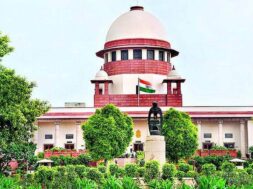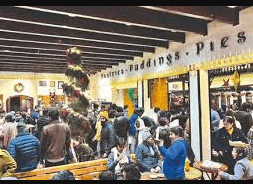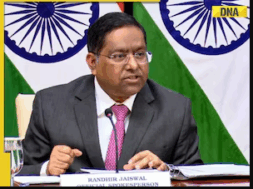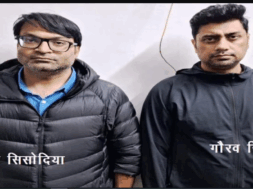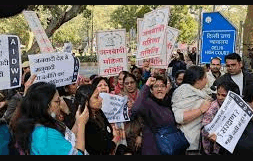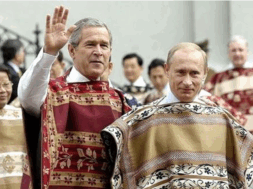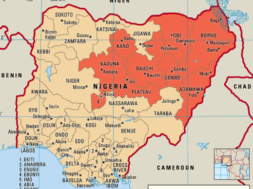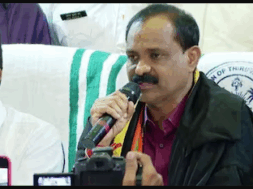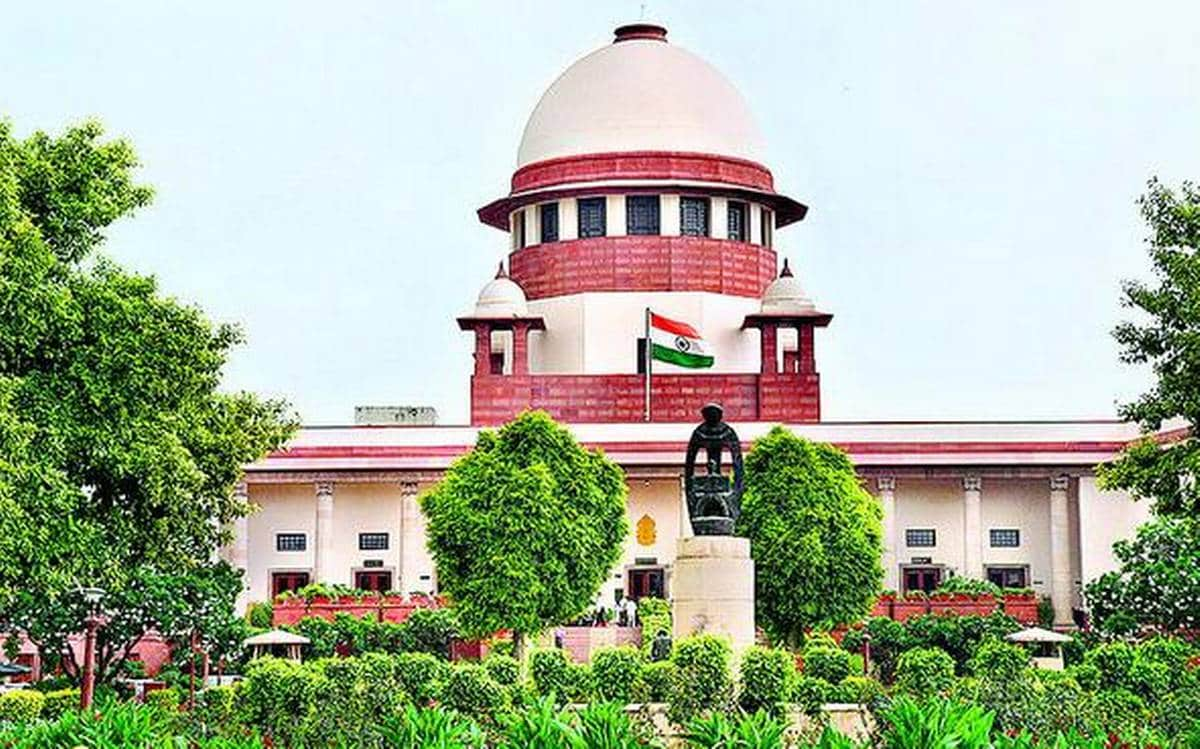
SC Dismisses “Larger Conspiracy” Theory against Modi and Others in 2002 Gujarat Riots
Manas Dasgupta
NEW DELHI, June 24: Ms Zakia Jafri, the widow of the slain former Congress Member of Parliament from Ahmedabad Ehsan Jafri, lost her 20 year old case with the Supreme Court on Friday dismissing her “larger conspiracy” charges against the former Gujarat chief minister Narendra Modi, now the prime minister, and some 60 others in the infamous 2002 Gujarat communal riots.
Upholding the clearance issued to the then Chief Minister of the state-Modi-by a Special Investigation Team (SIT), which functioned under the direct supervision of the apex court, the three-judge bench used strong comments against the petitioner stating that the plea was filed “to keep the pot boiling, obviously, for ulterior design.” “All those involved in such abuse of process need to be in the dock and proceeded with in accordance with law,” the judges said, surmising that the appeal was filed under “dictation of someone.”
The court felt that inaction or failure of “some officials of one section of the State administration” cannot be the basis to infer a pre-planned criminal conspiracy by the State government. The failure of certain officials cannot be inferred as a “State-sponsored crime (violence) against the minority community”, the Supreme Court said.
Allegations of criminal conspiracy at the “highest level” cannot be inferred by simply linking the State’s failures, it noted. A conspiracy can be alleged only if there is clear proof of “meeting of minds” to commit a crime.
The three-judge Bench led by Justice A.M. Khanwilkar upheld the closure report filed by the Supreme Court-appointed SIT in Ms. Jafri’s complaint in February 2012. The SIT had found no material evidence against Modi and the other higher-ups in the State. The Gujarat High Court too, in October 2017, had refused to entertain Ms. Jafri.
“No fault can be found with the approach of the SIT in submitting final report dated February 8, 2012, which is backed by firm logic, expositing analytical mind and dealing with all aspects objectively for discarding the allegations regarding larger criminal conspiracy (at the highest level) for causing and precipitating mass violence across the State against the minority community during the relevant period,” Justice Khanwilkar, who authored the 452-page judgment for the Bench, observed.
The court observed that the SIT had operated under the strict scrutiny of the Supreme Court’s own amicus curiae. It held that the appeal against the exoneration of Modi in the 2002 Gujarat riots case by the 84-year old widow of the former MP in the violence was “devoid of merits” and filed “to keep the pot boiling,” and dismissed the petition. Ehsan Jafri was among 68 people killed in a mob attack infamous as “Gulbarg Society massacre.”
The bench said the petitioner’s arguments were bordering on “undermining the integrity and sincerity” of SIT members and most of the content in the plea was “based on versions of others which have been found to be replete with falsehood.” It also said the submissions by Ms Jafri were “far-fetched and an attempt to undo and undermine the industry of the SIT in investigating the cases”.
The Gulbarg Society massacre was one of the worst incidents of violence in the riots that began after Godhra train carnage in which 59 “kar sevaks” of the Vishwa Hindu Parishad were killed in a fire in a coach in the train while returning from Ayodhya. Disagreeing with the SIT closure report, Ms Jafri had filed the petition seeking a fresh investigation into the communal riots, alleging a larger conspiracy involving politicians and the police.
Supreme Court Justices AM Khanwilkar, Dinesh Maheshwari and CT Ravikumar had reserved the verdict last December.
In 2016, a special court in Ahmedabad convicted 24 attackers for the massacre that the court described as the “darkest day in the history of civil society.” But the court, which also acquitted 36 people including a BJP corporator in this case, underlined that there was no larger conspiracy. Over 1,000 people, mostly Muslims, were killed in the three-day unchecked violence before army was deployed in Ahmedabad and other riot-affected areas in Gujarat.
Upholding the Gujarat Magistrate court’s decision to accept the SIT’s closure report which was a product of “indefatigable work”, the apex court said a breakdown of law and order in a State, even caused by inaction of the State officials, leading to spontaneous mass violence does not necessarily mean there was a conspiracy afoot.
“The breakdown of law-and-order situation in the State including attributable to the alleged inaction of the (State) duty holders, owing to spontaneous mass violence cannot be a safe measure to infer as being a part of the criminal conspiracy at the highest level of political dispensation unless there is clear evidence to so conclude regarding meeting of the minds of all concerned and their concerted efforts to commit or promote commission of such crime,” the bench held.
In a snub to petitioners like Teesta Setalvad, who had fought the case on behalf of Ms. Jafri for decades, the court said the “protagonists of quest for justice sitting in a comfortable environment in their air-conditioned office may succeed in connecting failures of the State administration at different levels during such horrendous situation, little knowing or even referring to the ground realities and the continual effort put in by the duty holders in controlling the spontaneous evolving situation unfolding aftermath mass violence across the State”.
The court said allegations were made against Modi and the others by Ms. Jafri solely on the basis of the “ultra-sensational revelation” projected by senior police officers R.B. Sreekumar, Sanjiv Bhatt, and Haren Pandya, a former Gujarat Minister who was killed in 2003, that certain utterances were made by the then Chief Minister and other senior officials in a meeting held on February 27, 2002 “to give vent to the Hindu anger on the minorities in the wake of the Godhra incident” in which kar sevaks travelling in Sabarmati Express train, returning from Ayodhya, were allegedly attacked and coaches of the train were set on fire at Godhra Railway Station killing 59 people.
“The testimony of Sanjiv Bhatt, Haren Pandya and also of R.B. Sreekumar was only to sensationalise and politicise the matters in issue, although, replete with falsehood,” the court concluded. “Besides exposing the falsity of the claims of these persons, the SIT has been able to collate materials indicative of the amount of hard work and planning of the State functionaries in their attempt to control the spontaneous evolving situation of mass violence across Gujarat,” the court observed.
It said despite several handicaps, including the inadequate state police force, the then Chief Minister had made repeated calls to maintain peace and was quick to seek replenishment of the police force with central forces and the Army.
The court said there was no failure of intelligence, causing the violence. “There is no material forthcoming to indicate that there was failure on the part of intelligence to collect information and it was a deliberate act on the part of the state government authorities,” Justice Khanwilkar found.
The court said accepting the argument of a larger conspiracy behind the riots would raise the question whether the Godhra train burning was also the “outcome of alleged larger criminal conspiracy.” “Such a view would be preposterous,” Justice Khanwilkar observed.
